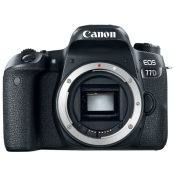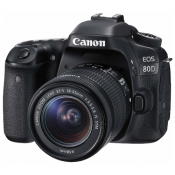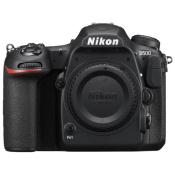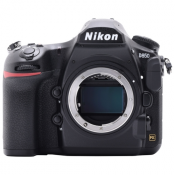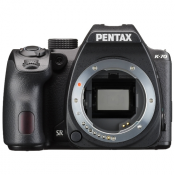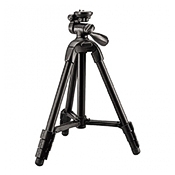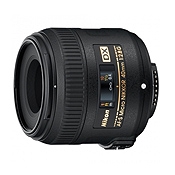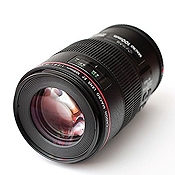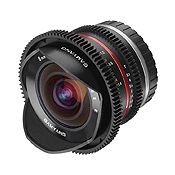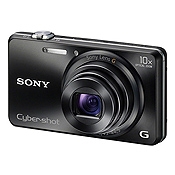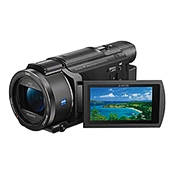Canon EOS 5DSR Body
Short review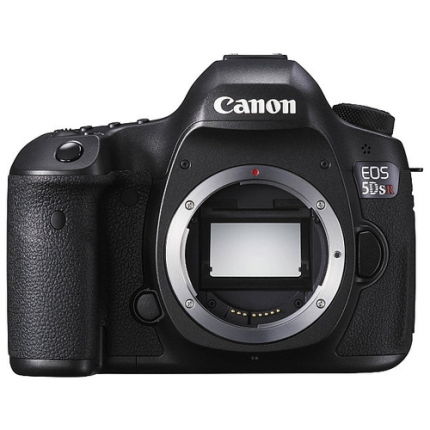
Selected in the rating
6
Best rating
SLR cameras
Professional - Matrix: full frame - Video resolution: Full HD
Buy Canon EOS 5DSR Body
Canon EOS 5DSR Body Specifications
Yandex.Market data
| Camera | |
| Camera type | mirror |
| Lens | |
| Interchangeable lens support | Canon EF mount |
| Lens included | no |
| Matrix | |
| Total Pixels | 50.6 M |
| Effective Pixels | 53 million |
| The size | Full frame (36 x 24 mm) |
| Crop factor | 1 |
| Maximum resolution | 8688 x 5792 |
| Matrix type | CMOS |
| Color depth | 42 bit |
| Sensitivity | 50 - 3200 ISO, Auto ISO |
| Extended ISO values | ISO100, ISO6400, ISO12800 |
| Matrix cleaning function | there is |
| Functionality | |
| White balance | automatic, manual, from the list, bracketing |
| Flash | red-eye reduction, shoe, bracketing, E-TTL II |
| Image Stabilizer (Still Image) | is absent |
| Shooting modes | |
| Shooting speed | 5 fps |
| Maximum burst of shots | 510 for JPEG, 14 for RAW |
| Timer | there is |
| Timer running time | 2, 10 s |
| Time-lapse mode | there is |
| Aspect ratio (still image) | 4:3, 3:2, 1:1, 16:9 |
| Viewfinder and LCD | |
| Viewfinder | mirrored (TTL) |
| Using the screen as a viewfinder | there is |
| Viewfinder field of view | 100% |
| LCD screen | 1,040,000 dots, 3.20 inches |
| Second screen | there is |
| Exposition | |
| X-Sync shutter speed | 1/100 s |
| Manual setting of shutter speed and aperture | there is |
| Automatic exposure processing | shutter priority, aperture priority |
| Exposure compensation | +/- 5 EV in 1/3-stop increments |
| Exposure metering | center-weighted, general (Evaluative), point |
| Exposure Bracketing | there is |
| Focusing | |
| Autofocus type | phase |
| Manual focus | there is |
| Autofocus correction | there is |
| Memory and interfaces | |
| Memory card type | SD, SDHC, SDXC |
| Image formats | JPEG, RAW |
| Interfaces | USB 3.0, HDMI, mic-in, remote control jack |
| Food | |
| Battery format | your own |
| Number of batteries | 1 |
| Battery capacity | 700 photos |
| Video and sound recording | |
| Video recording | there is |
| Video recording format | MOV |
| Video codecs | MPEG4 |
| Maximum video resolution | 1920x1080 |
| Maximum video frame rate | 60 frames / s |
| Maximum frame rate when shooting HD video | 50/60 fps @ 1280x720, 25/30 fps @ 1920x1080 |
| Video recording time | video file size 4 GB or 29 minutes |
| Sound recording | there is |
| Recording audio comments | no |
| Other functions and features | |
| No low pass filter | Yes |
| Body material | metal |
| Additional features | tripod mount, remote control, orientation sensor, computer control, HDR shooting |
| Sales start date | 2015-06-15 |
| Dimensions and weight | |
| The size | 152x116x76 mm, without lens |
| Weight | 845 g, without batteries; 930 g, with batteries, without lens |
Opinions from the Canon EOS 5DSR Body
Yandex.Market data
Advantages:
High resolution, stunning detail and sharpness of images. For studio and advertising photographers, an obvious 'must have'. The camera, of course, is not able to seriously compete with the medium format, but it significantly expands the possibilities for working in the commercial segment. Moved from the 5D Mark III as soon as the camera went on sale. The camera is very demanding on lenses. The old L-lens lineup is not capable of realizing the full potential of the new camera. A must for purchase is the second generation 24-70 F 2.8, or the 24-70 F 4.0 IS L. Works perfectly with the latest Sigma ART 50 mm and 35 mm lenses, as well as the new 35mm L from Canon.
Disadvantages:
A huge matrix teaches you to be very careful: at a shutter speed below 1/80, a wiggle may appear even at a focal length of 70 mm.The dynamic range of the matrix remained at the level of Canon's predecessors, the rate of fire dropped to 5 frames per second (an insignificant minus). Demanding on flash drives. Now all 600x SD can be sent to friends - the camera with them is slow. Works well on CF 1000x and SD with at least 45Mb / s write speed (90 reads). The battery runs out noticeably faster than the 5D Mark III.
Comment:
I'm not sure if the camera is suitable for landscape photography - after all, the dynamic range is not very wide. Highly recommended for all studio and advertising photographers. Obviously, for photographers using lighting equipment, the problems with low ISOs and not too wide DR are completely irrelevant. Necessarily requires the use of super-high-quality optics to realize the potential of a huge matrix.
February 26, 2016, Moscow
Advantages:
Resolution: Low film noise, even at maximum ISO. No parasitic noise colors in shadows. Fine settings.
Disadvantages:
Not yet revealed.
Comment:
No marketing overstated ISO. The manufacturer focused on really working ISO on all ranges, without overestimating their number to hundreds of thousands. At 12.800 ISO, the picture looks real with high enough detail and pleasant film noise. Two processors work out their money really.
August 29, 2015, St. Petersburg
Advantages:
I tested my Canon 5DSR camera for myself. Lens Canon 35 1.4 L. Lens without stabilizer. No additional options (pre-lift mirror, etc.) included. Usually I use Canon 5D mark 3 and Canon 5D mark 2, I shot the same way as with the third mark. First of all, I was interested in what shutter speeds you can shoot with your hands. I took it off my hands. Impressions and conclusions. 1. Found a very useful option - there is a horizon level in the camera's viewfinder. Many photographers, including great ones, sin and have sinned by blocking the horizon. It turned out that I flood the horizon much more often than I thought.
Disadvantages:
2. Filmed at Krasnoyarsk Pillars. The weather is rather cloudy. Settings: ISO 400, shutter priority. On each object I made a series of exposures: 40, 80, 160, 200, 320, 640, 1250, 2500, 5000, 8000. I checked the RAWs obtained at 100x magnification on the DPP4 supplied with the camera. The number of shots of satisfactory quality by shutter speed (at each shutter speed about 30 shots in different versions): 25 - 0 30 - 0 40 - 10% 80 - 20% 160 - 60% 250 - 95% 320 - 95% 640 - 60% 1250 - 50% 2500 - no 5000 - no 8000 - no Some results. At first (long exposures from 30), as I understand it, 2 critical factors were at work: the long exposure itself and the aperture of 8 or more. About this property - from aperture 8 (with a smaller hole) - to worsen the image, enough has been written before me. With a decrease in the shutter speed to 200 - 320, the smears on the sensor probably ended, while, as it turned out, the aperture value on good shots was from 2.8 - 4 to 7.1. Changing from 8 to a smaller hole - starts to blur the image, increasing the hole from 2.8 - significantly reduces the field of focus. Then, at shutter speeds of 640, the camera began to lack light. The camera could not increase the ISO and the pictures became underexposed (dark and very dark). When trying to increase their brightness in the proprietary DPP4, it turned out that, unlike, for example, the Canon 5D mark 2 and Canon 5D mark 3 cameras, the Canon 5DSR does not adequately stretch the dark areas. Those. those places, for example, the shadow side of the rock (in contrast to mark 3) does not become normal with increasing brightness. The feeling that someone has greatly increased the contrast and killed all the dark areas. Another unexpected problem: if a gray or light gray object or background was underexposed, then when lightening (and without lightening), very noticeable noise appears on it.
Comment:
1. The camera, at ISO 400, with a 35 mm lens allows you to take pictures of nature from your hands in fairly dim lighting - it was cloudy. 2. At shutter speeds of 250 - 320, a 2.8 to 7.1 Canon 5DSR aperture with a 35mm lens gives an acceptable result when shooting handheld.At the same time, shutter speeds longer than 1/250, apertures outside the boundaries of 2.8 - 5.6 - increase the amount of possible rejects. In our case, the ratio of the minimum comfortable shutter speed to the focal length of the lens is 250: 35. For a lens with a focal length of 70, the shutter speed (without stabilizer) is 2 times shorter - 500: 70 (for example, for a lens 24-70). focal length 140 - shutter speed (without stabilizer) - 4 times faster - 1000: 140 (for example, for a 70-200 lens). 3. Insufficient exposure (dark frame) due to insufficient lighting, too closed aperture, etc. - most likely a defect. 4. Probably not tried, the presence of a stabilizer on the lens can shorten the exposure time without blur. I doubt it about the need to switch to new lenses. The former fives (Canon 5, Canon 5D mark 2 and Canon 5D mark 3) are equally good at shooting both old and new objects (without II). To all appearances, there is no question of any change in the angles of incidence, etc., of fundamental changes in the optical system. The difference according to real tests of two generations of lenses is a little worse resolution at the edges of the frame. With a very difficult to predict innovation in terms of consequences - plastic (plastic lens 35 1.4L II) in a new generation lens. 5. My results are very rough. I shoot handheld at long enough exposures, I'm not sure if you can repeat that. IMHO. 6. I read about the need to change memory cards and improve a computer from theoreticians. I didn’t notice it. There are no problems when taking photos with memory cards. The computer (processor i5 - 6470 3.40 GHz, memory 16 GB) with DPP4 worked quite fast. Alexey Voevodin, voevodin.info
May 22, 2016, Krasnoyarsk
Advantages:
High resolution, good color rendition, some of the previously purchased lenses performed well.
Disadvantages:
I didn't find it for myself, except that the charge of two batteries is quickly consumed.
Comment:
A good machine for studio photographers and landscape painters. A great addition to 1DX. I am waiting for 1DX Mk2.
February 21, 2016, Moscow
